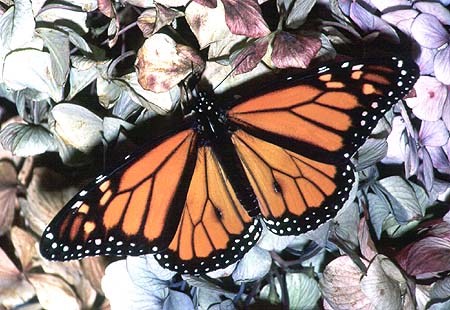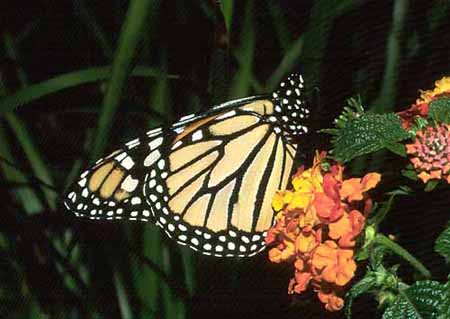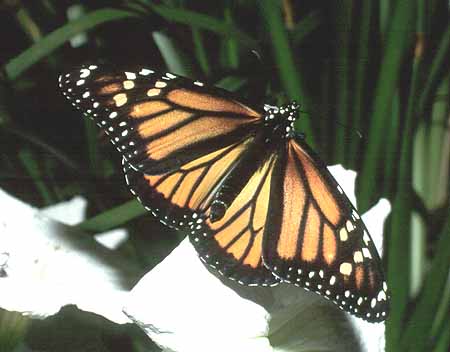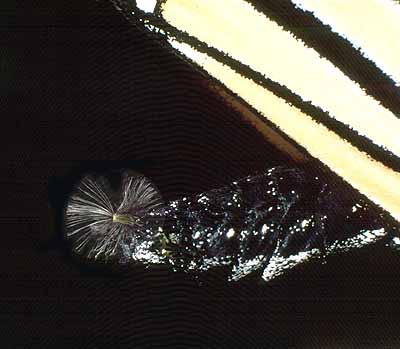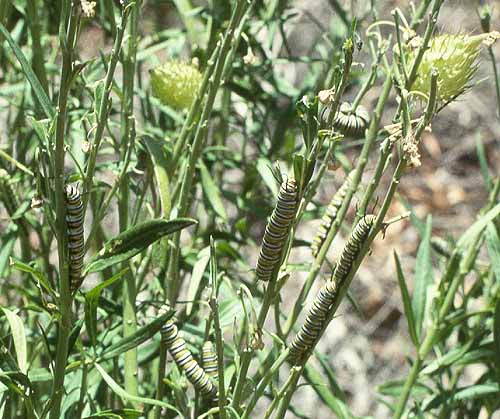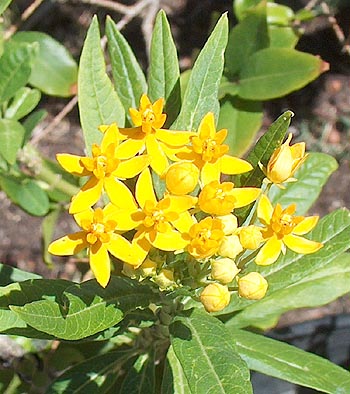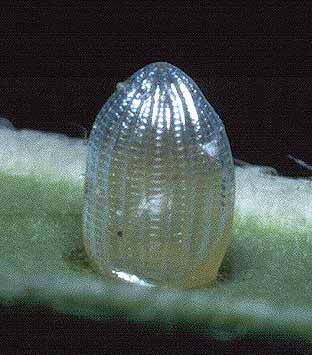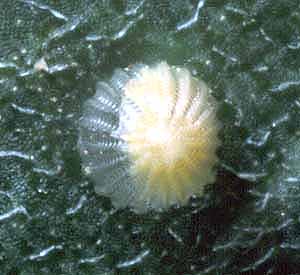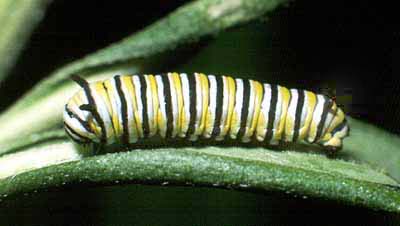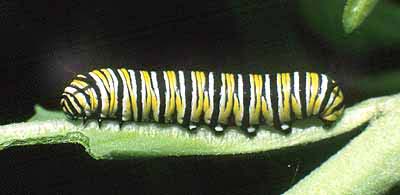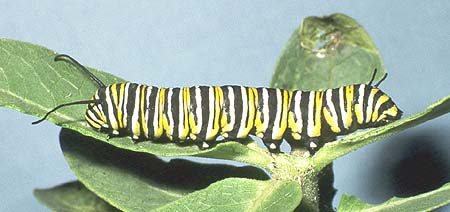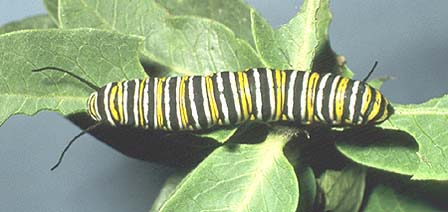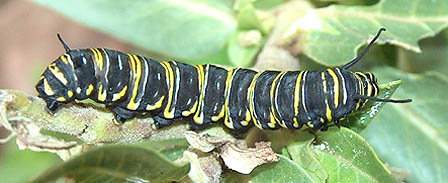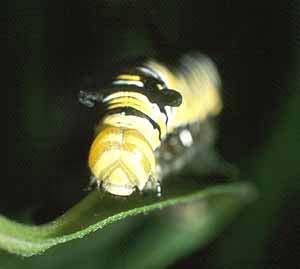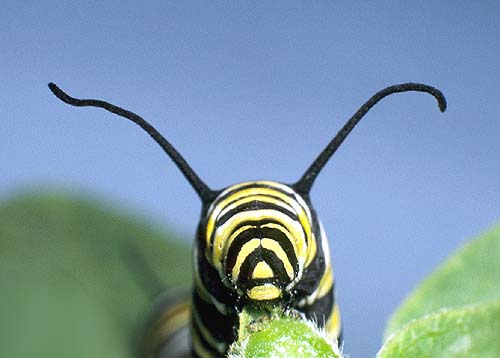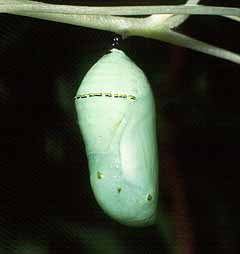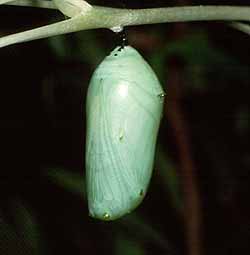Larva in the throes of pupating. On the left is the prepupa about 12 hours after hanging up.
The second picture is after a further 12 hours, and shows the larva at the point of pupation
where it is exerting internal pressure to its outer skin, immediately behind its head.
(0 minutes).
This causes the outer skin and head to split, shown in Picture 3.
(2 minutes after Picture 2)
The larva then pulsates like a concertina, to shrug the outer skin along its body to its
posterior end (at top of picture).
(Picture 4 after 3 min, Picture 5 after 3 1/2 min)
The skin is eventually moved all the way to the rear (top).
(Picture 1 after 4 min, Picture 2 after 5 min)
The cremaster is then firmly attached to the white silken pad on the branch.
(Picture 3 after 6 1/2 min)
Then the pupa (no longer a larva) wriggles like mad to make sure the cremaster
becomes firmly attached, and to discard the skin so that it does not get in
the way of the abdomen as it shrinks to its final shape.
(Picture 4 after 8 min, Picture 5 after 10 min)
As the pupa acquires its final shape, the abdomen shrinks while the wing cases elongate,
until the pupa eventually acquires its final shape, although at this stage it is still
soft.
(Picture 1 after 14 min, Picture 2 after 22 min, Picture 3 after 38 min, Picture 4 after
63 min, Picture 5 after 120 minutes)
Pupa of the Wanderer after several days of hardening, and after the yellow rings have faded.
